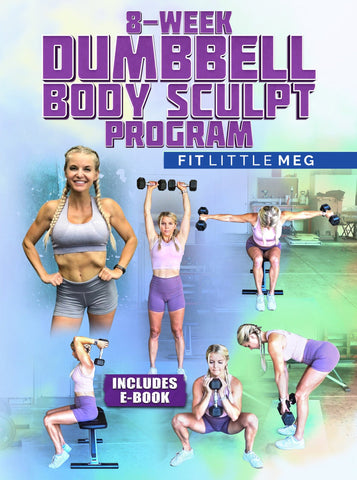The Kettlebell Rack Squat
When it comes to functional strength training, few exercises rival the effectiveness of kettlebell squat variations. Among these variations, the kettlebell rack squat stands out as a powerful movement that not only builds lower body strength but also places a significant emphasis on core engagement and encourages an upright posture – a key factor in maintaining overall musculoskeletal health. In this article, we'll delve into the nuances of the kettlebell rack squat, its benefits, and how it complements other dynamic kettlebell squat variations, such as kettlebell jump squats, hack squat kettlebell, kettlebell squat to press, and kettlebell clean squat press.
What this article covers:
- Benefits of the Kettlebell Rack Squat
- Incorporating the Kettlebell Rack Squat into Your Routine
- Dynamic Kettlebell Squat Variations
The kettlebell rack squat involves holding a kettlebell close to your chest in what's known as the rack position – a position that's not only ergonomically sound but also activates your core muscles in an unparalleled manner. This exercise provides an opportunity to refine your squat technique, cultivate core stability, and develop functional strength that translates into real-world movements.
Benefits of the Kettlebell Rack Squat
Core Activation and Stability:
The placement of the kettlebell at chest level demands substantial core engagement to maintain an upright posture throughout the movement. This engagement stabilizes your spine, prevents excessive lumbar flexion, and enhances your overall core strength.
Upright Posture:
The modern sedentary lifestyle often contributes to poor posture, leading to various musculoskeletal issues. The kettlebell rack squat counteracts this by promoting an upright torso, which carries over to improved posture in daily life.
Functional Strength:
The kettlebell rack squat challenges not only your lower body but also your upper body and core. This comprehensive engagement mirrors the demands of real-world activities, making you better equipped to tackle daily tasks or athletic pursuits.
Enhanced Mobility:
By holding the kettlebell in the rack position, you encourage better shoulder mobility and thoracic spine extension. Over time, this can lead to improved range of motion and reduced risk of shoulder injuries.
Incorporating the Kettlebell Rack Squat into Your Routine
Follow these steps to execute the kettlebell rack squat effectively:
Set Up:
Stand with your feet shoulder-width apart. Hold the kettlebell by its horns, with the handle pointing diagonally across your palm. Position the kettlebell close to your chest, creating a shelf with your forearm.
Squatting Movement:
Initiate the squat by pushing your hips back and bending your knees. Keep your back straight, chest up, and core engaged throughout the movement. Lower yourself until your thighs are parallel to the ground or as far as your mobility allows.
Rising Up:
Push through your heels to stand back up, maintaining the kettlebell in the rack position. Keep your core engaged to stabilize your body as you rise.
Dynamic Kettlebell Squat Variations
To amplify the benefits of the kettlebell rack squat, consider incorporating other dynamic kettlebell squat variations into your routine:
Kettlebell Jump Squats: For explosive power and increased vertical leap, integrate kettlebell jump squats. Begin with a regular squat and explode into a jump, landing softly and returning to the squat position.
Hack Squat Kettlebell: Target your quads and glutes with hack squat kettlebell. Hold the kettlebell behind you, allowing it to rest against your calves, and perform squats while maintaining an upright posture.
Kettlebell Squat to Press: Combine lower body strength with upper body engagement by transitioning from a squat to an overhead press. This full-body movement enhances coordination and efficiency.
Kettlebell Clean Squat Press: Elevate your functional fitness with the clean squat press. This advanced movement involves swinging the kettlebell from the ground, transitioning into a squat, and finishing with an overhead press. It challenges your entire body in a coordinated sequence.
Final Thoughts
The kettlebell rack squat isn't just a lower body exercise; it's a holistic movement that challenges your core, enhances your posture, and builds functional strength. When combined with other dynamic kettlebell squat variations like kettlebell jump squats, hack squat kettlebell, kettlebell squat to press, and kettlebell clean squat press, you're embarking on a journey to transform your strength, mobility, and overall fitness. By incorporating these variations into your training regimen, you're not only investing in your physical fitness but also in your long-term musculoskeletal health. Remember, mastering these dynamic kettlebell squat variations takes time, so be patient with yourself as you reap the rewards of improved core stability and an upright, confident posture.
Did you find the blog helpful? If so, consider checking out other guides:
- Sumo Squats with Kettlebells
- Kettlebell Goblet Squat
- Kettlebell Front Squat
- Kettlebell Swing Squat
- Kettlebell Split Squat
- Overhead Squat with Kettlebells
- Double Kettlebell Squat
- Pistol Squat on Kettlebell
- Kettlebell Floor Press
- Bent Press Kettlebell
- Half Kneeling Kettlebell Press
- Kettlebell Military Press
- Overhead Press Kettlebell
- Double Kettlebell Clean and Press
- Kettlebell Strict Press





